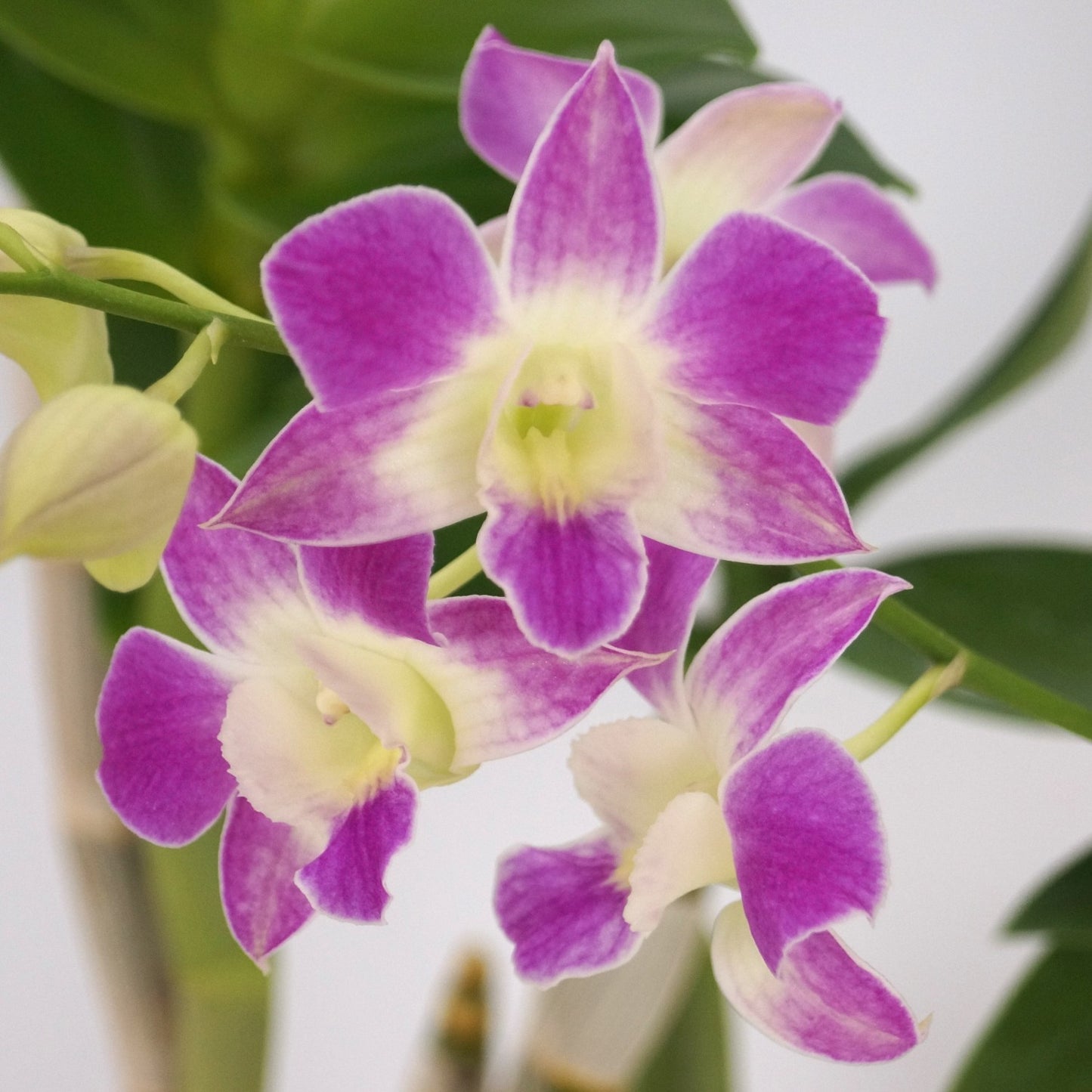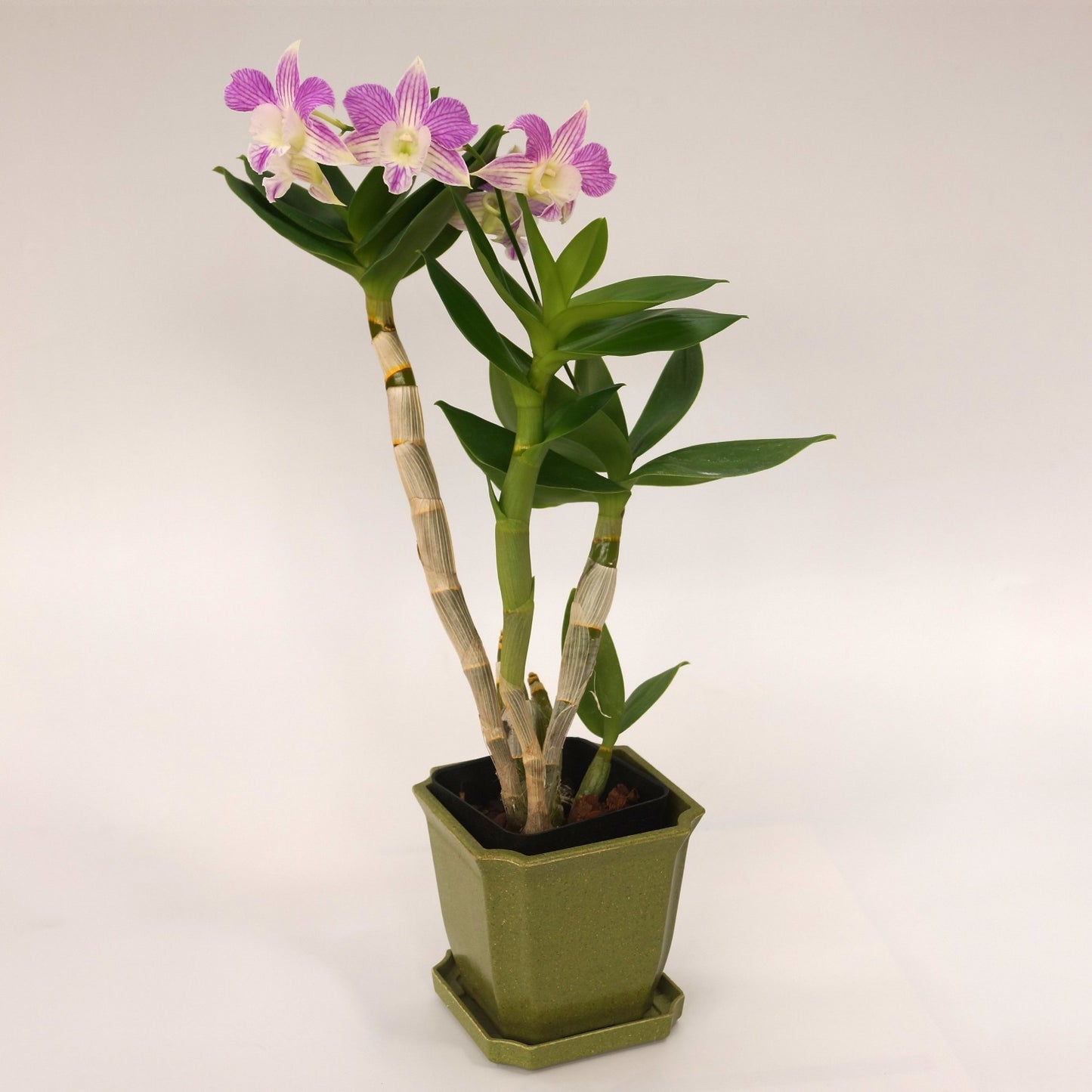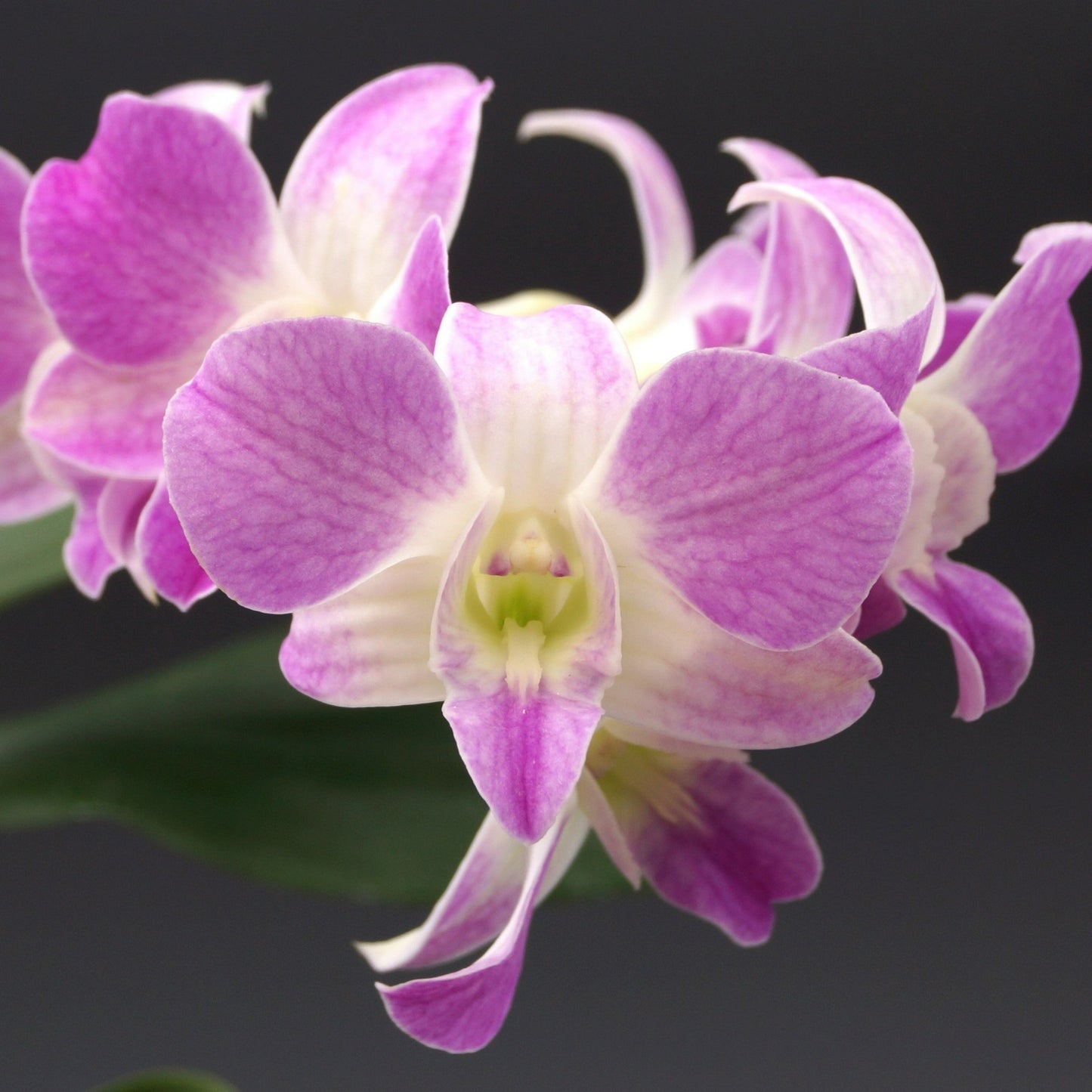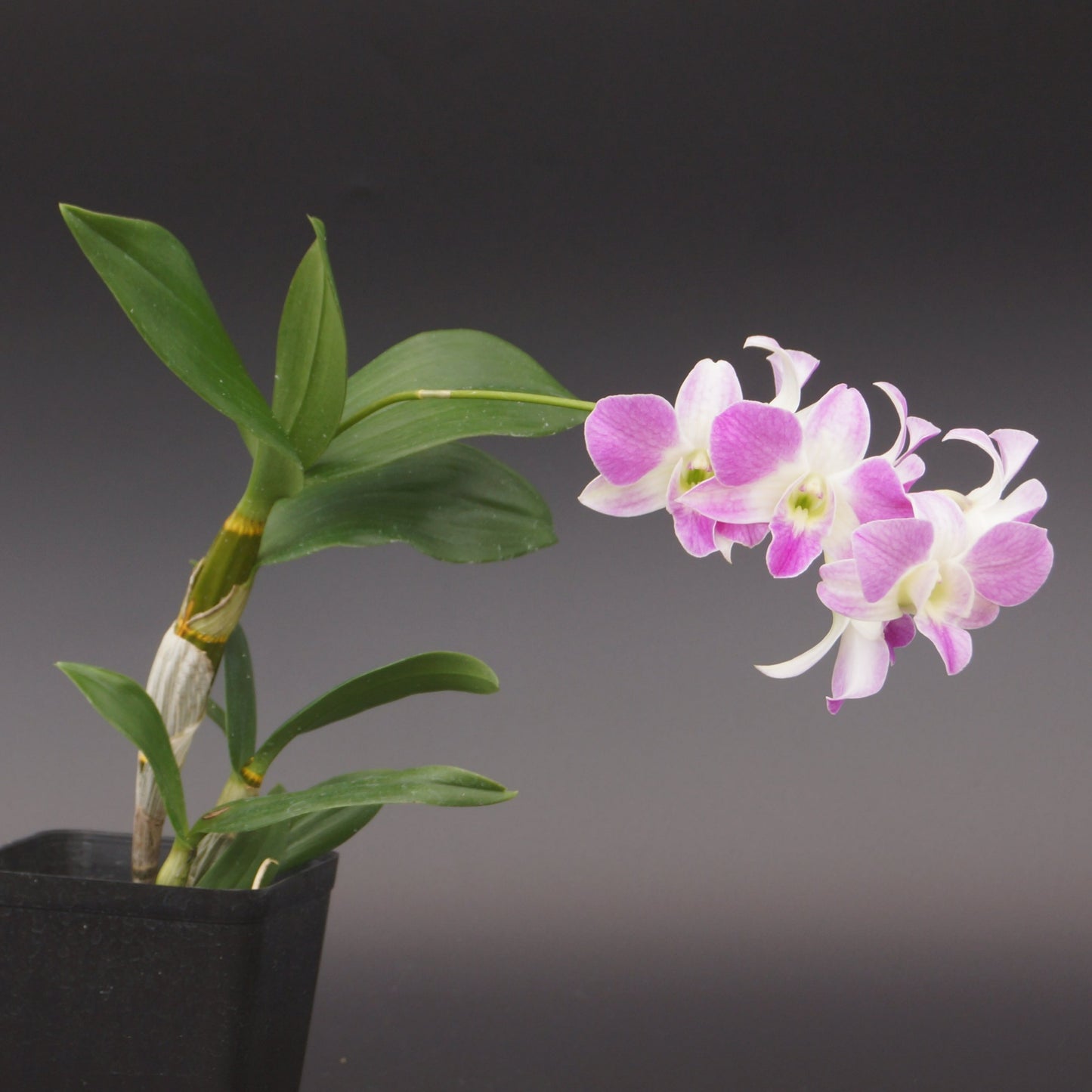Kalapana Orchid Farm
Dendrobium Mini Snowflake x Nida
Dendrobium Mini Snowflake x Nida
Couldn't load pickup availability
This hybrid is a fantastic example of a "semi-antelope" Dendrobium, beautifully blending the traits of its diverse parents. The flowers, held in elegant upright sprays, are striking and exotic. The petals and sepals have a creamy, pale green-white base, almost entirely overlaid with sharp, distinct magenta-pink stripes that follow the veins.
The petals stand upright and have a slight, graceful twist, a clear nod to their Spatulata (antelope) heritage. The sepals are narrower, and the whole flower has a starry, open shape rather than the round, flat look of a "Phal-type." The lip is a complex, contrasting cream-white, also marked with fine magenta veining, especially on the side lobes. The blooms are wonderfully crystalline in texture.
The plant itself is a "hard-cane" Dendrobium. It grows from upright pseudobulbs (canes) that stand about 12-18 in. tall. New canes are lush and leafy, covered in alternate, ovate (egg-shaped) leaves about 3-5 in. long. As a cane matures, it blooms from the upper nodes. Over time, these older canes will naturally drop their leaves, turning tan and papery, but they continue to serve as water and energy storage for the rest of the plant.
Quick Start
Light: Bright, filtered light (2,000–3,500 foot-candles). Similar to Cattleya.
Temps: Intermediate–Warm. Days 75–85°F (24–29°C); Nights 60–68°F (15–20°C).
Water: Water thoroughly, then allow the media to become mostly dry between waterings. No hard, leafless winter rest.
Humidity: 50–70% with good air movement.
Fertilizer: Balanced (e.g., 20-20-20) at ¼–½ strength, weekly during active growth.
Media: Very open, fast-draining mix. Medium-grade fir bark, coco husk chunks, or lava rock.
🌺 Orchid Lore & Discovery
This hybrid is a fascinating lesson in dominant genes. Its family tree pulls from three different sections of Dendrobium, but one parent clearly dictates the flower's final appearance.
Parent 1: Dendrobium Mini Snowflake This is a hybrid of two Latouria section species: (Den. aberrans x Den. johnsoniae). Both are native to the high-elevation, misty cloud forests of Papua New Guinea. This parent passes on a wonderfully compact plant size, leathery leaves, and a tendency to bloom multiple times a year rather than one big show.
Parent 2: Dendrobium Nida This is a hybrid of (Den. bigibbum x Den. lineale).
Den. bigibbum (Section Phalaenanthe): This is the famous "Cooktown Orchid" from Queensland, Australia, which thrives in hot, seasonally dry climates. It is the genetic heavyweight here, completely dominating the flower's shape and color. It provides the flat, round, pink-and-white "Phal-type" look.
Den. lineale (Section Spatulata): This is a true "antelope" Dendrobium from the hot, humid lowlands of Papua New Guinea. While its "twisted petal" trait has been completely suppressed, its genetics likely contribute to the tall spray of flowers and overall plant vigor.
So, you get the beautiful, classic look of a Phalaenanthe Dendrobium on a more compact, manageable, and free-flowering plant, courtesy of its Latouria grandparent.
🌿 How to Grow Dendrobium Mini Snowflake x Nida
Light: This hybrid needs bright, filtered light to bloom well. An east window with morning sun, a bright shaded west window, or a south window with a sheer curtain is ideal. The leaves should be a healthy, medium olive-green. Too dark, and you'll get canes but no flowers.
Temperature: This is an intermediate-to-warm grower. It loves daytime temperatures between 75–85°F and nighttime lows between 60–68°F. It can handle higher temperatures if humidity and airflow are high, but it does not like to stay cold and damp.
Water: This is not a Dendrobium that needs a hard winter rest. Its Latouria and Spatulata ancestors prefer year-round moisture. Water thoroughly, letting it gush through the pot, and then wait until the medium is mostly dry, but not bone-dry, before watering again. Reduce frequency slightly in winter, but never stop completely.
Humidity: Aim for 50–70% humidity. In drier homes, a humidifier or a pebble tray (filled with water, ensuring the pot sits on the pebbles, not in the water) can help. Good air movement is essential to prevent fungal issues in the leafy new growths.
Fertilizer: Feed "weakly, weekly" during periods of active growth (when you see new roots or new canes forming). Use a balanced fertilizer (like 20-20-20) at ¼ to ½ strength. During the winter, reduce feeding to once every two or three weeks.
Media: Drainage, drainage, drainage! As a "hard-cane" type, it detests soggy feet. Pot in a very airy, open medium like medium-grade fir bark, coconut husk chunks, charcoal, or lava rock. They prefer to be snug in their pots (under-potting is better than over-potting). Repot every 2–3 years, just as new root growth is starting, before the media breaks down.
Share










